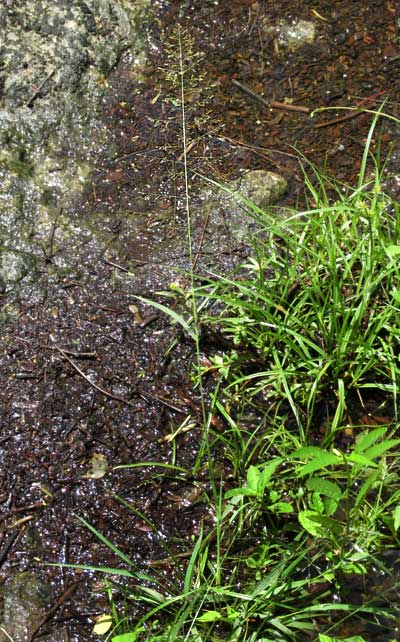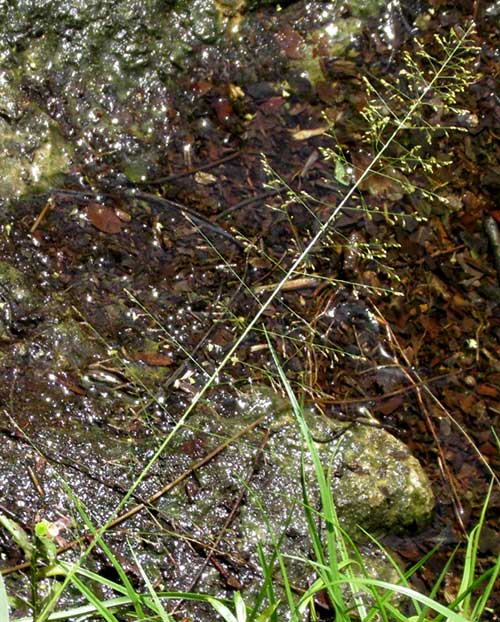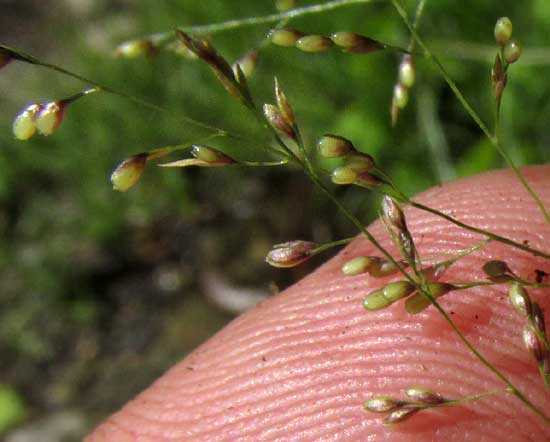Excerpts from Jim Conrad's
Naturalist Newsletter
from the August 21, 2016 Newsletter issued from Hacienda Chichen Resort beside Chichén Itzá Ruins; limestone bedrock; elevation ~39m (~128ft), N20.675°, W88.569°; central Yucatán state, MÉXICO
BUCKLEY'S DROPSEED
In thin soil atop limestone, at the edge of a temporary pool formed in mid-trail passing through the Hacienda's woods, a grass with a long, diffuse head of tiny spikelets was larger than seemed appropriate for the meager tuft of leaves at its base, as shown below:

As diffuse, panicle-type, grass flowering-heads go, this one not only was particularly long but also slender, as seen below:

In grass identification, one of the first field marks to note is whether the ultimate flower-bearing structures in the flower head, or inflorescence, contain one or more than one florets. Below, you can see that our pool-side grass's spikelets had only one:

In that picture other field marks that helped in the grass's identification were that the spikelets were purplish to brownish, and that the scale-like glumes at the bottom of each spikelet were thin and shiny, or "membranous," with a conspicuous ridge-like "keel" running down their middles. The mature fruits were egg-shaped, or "ovoid," but slightly flattened. The world of grass ligules -- ligules being the wall-like structures that may or may not form where the blade meets the stem -- is a tremendously varied one, so it's always a good idea to pay attention to them. Our pool-grass's ligule is shown below:

All these details led us to SPOROBOLUS BUCKLEYI. Species in the genus Sporobolus often are called dropseeds, so the literature sometimes calls this one Buckley's Dropseed.
Bukley's Dropseed is described as growing at the margins of woods or thorn scrub, sometimes in partial sunlight, from southeastern Texas south to Belize and Guatemala. Here it's neither rare nor common, just showing up occasionally. Its seeds look perfect for small, ground-hopping songbirds such as finches, grassquits and the like.